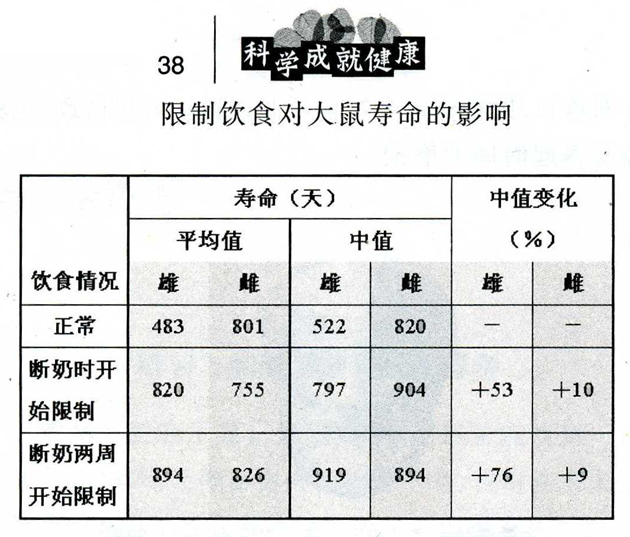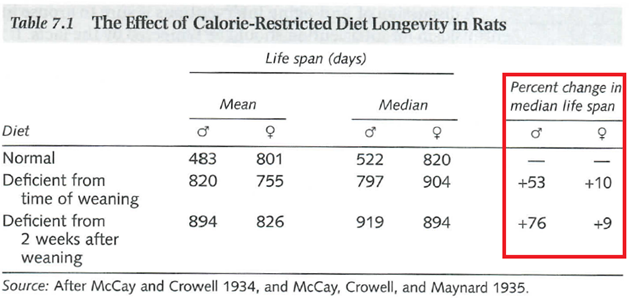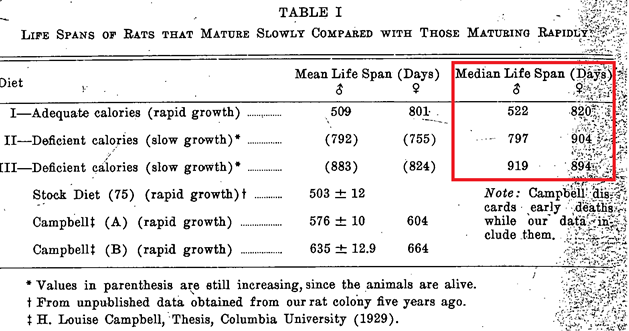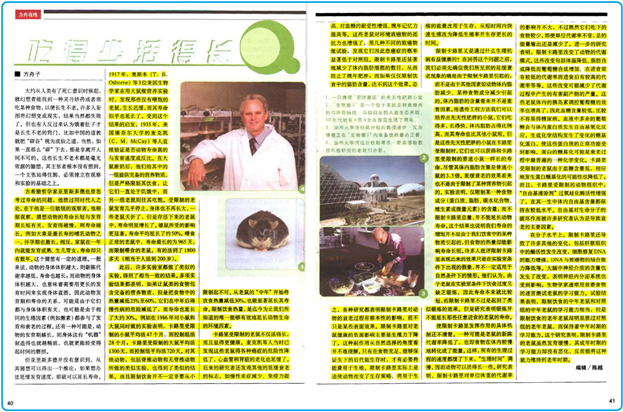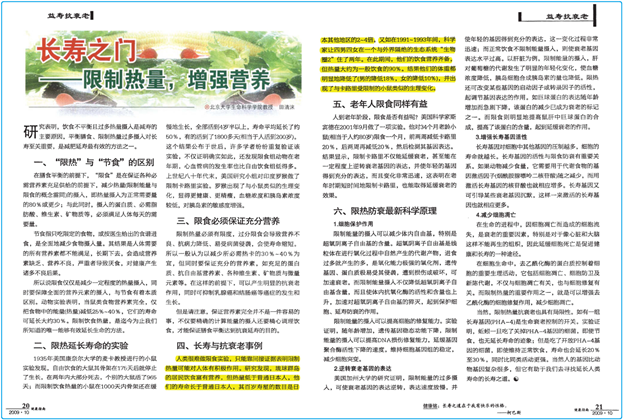| 第三封公開信 |
| 送交者: 亦明_ 2022月05月17日13:48:11 於 [教育學術] 發送悄悄話 |
| 回 答: 就方舟子剽竊科唬等問題給《新華每日電訊》的八封公開信 由 亦明_ 於 2022-05-17 12:20:11 |
老偷巨騙,先偷後騙──就方舟子抄襲科唬問題給《新華每日電訊》總編輯解國記先生的第三封公開信
2012年10月17日
【摘要】
《方巨騙,還在騙》發表後,有網友懷疑方舟子抄襲了北大教授田清淶的一篇文章。方舟子據此倒打一耙,反控田教授抄襲了他方舟子,因為他的《吃得少能否活得老?》乃是十年前的舊稿。我根據方舟子提供的這個線索,證明無論是舊稿還是新稿,全都是抄襲之作,抄襲對象主要是美國維恩大學教授阿金。不僅如此,我還證明,我在上文中指出的方舟子犯下的十個錯誤,很多都是源於抄襲。
【目錄】
一、做賊心虛,露出馬腳 二、賊窟被搗,文賊被抓 三、賊性大發,老少通吃 四、邪惡成性,賊喊捉賊 五、小結 六、參考文獻 附錄:方舟子《吃得少活得老》一文抄襲來源比較
*** *** *** *** *** ***
2012年9月21日,我以《方巨騙,還在騙》為題,給《新華每日電訊》總編輯解國記先生寫了第二封公開信。在信中,我根據《新華每日電訊》專欄作家方舟子在一周前發表的一篇文章──《吃得少能否活得老?》──開頭的250字,揭露了這個被《新華每日電訊》捧為“知名科普作家”的方舟子,實際上是一個文壇巨騙。這篇文章用六千餘言剖析方舟子的250個字,相當於殺雞用牛刀,炮彈打蒼蠅,我以為它會一錘定音,而方舟子則會一如既往地對我的揭批採用他自己總結出來的“一切造假者在事情敗露後的最後一招”──裝聾作啞──來招架。可是,事情的發展,完全出乎了我的預料──方舟子“反擊”了。而他的這個“反擊”,恰恰再次暴露出了這個巨騙的文賊嘴臉。詳述如下。
一、做賊心虛,露出馬腳
我的文章公開後,虹橋科技論壇網友“六指”在次日根據其中的線索,找到田清淶在2009年第10期《健康指南》上發表的《長壽之門——需限制熱量,增強營養》一文,指出其中的兩段話與方文神似。由于田文在先,方文在後,所以六指認為方舟子抄襲了田清淶。【1】六指的發現,在24日傳到新浪微博,產生了一定的影響。【2】於是,方舟子坐不住了。9月25日,方舟子在搜狐微博發表《關於北京大學生命科學學院教授田清淶抄襲的說明》,全文如下:
“北京大學生命科學學院教授、北京大學老齡問題研究中心科研部主任田清淶《長壽之門——需限制熱量,增強營養》一文(登於《健康指南》2009年10月)主要參考我寫於2002年的《吃得少活得老》(登於《環球》半月刊2002年第21期,後收入《長生的幻滅》《科學成就健康》),其中‘四、長壽與抗衰老事例’一段全文照抄,只是自作聰明地把‘2~40倍’錯誤地改成‘2~4倍’。
方舟子的“說明”公布之後,眾方粉一片歡騰,以為這個舉世聞名的“絕代文賊”主子,終於打了一個翻身仗。比如,據信是“方舟子妻”劉菊花馬甲的那個“hqabc_”就在新浪微博撒歡兒般叫囂說:“亦明這次把戲演砸了!”、“被亦明釣魚了,來,傻一個!”、“錘子呀,你不小心被亦明釣魚了!”
滅亡前的猖狂一跳 2012年是方舟子在網上作惡最猖狂的一年,比他更猖狂的是方家娘子軍,其主要成員是大姐方雲秋、二姐方雲環、大奶劉菊花、二奶高小紅。不言而喻,她們都蒙面暴徒。
事實是,在《方巨騙,還在騙》發表之後,我根本就沒有再提此事。所以,方舟子在“說明”中說“亦明……等資深方黑更是跳得厲害”,完全是在造謠,其目的,顯然是要把六指的失誤,栽到亦明的頭上,以此來否定《方巨騙,還在騙》一文。而他的這個下三濫手法,恰恰說明他的心虛──否則的話,他應該直接駁斥亦明才對。方舟子心虛的更明顯證據就是,他至今沒敢把《吃得少能否活得老?》一文在自己的眾多博客(包括新語絲網站)上發表。顯然,他心中有鬼。
也就是因為看出方舟子心懷鬼胎,我於是根據方舟子提供的線索,把他的《長生的幻滅》和《科學成就健康》找來,結果直搗黃龍。
據查證,《吃得少能否活得老?》一文總共1874字(不計標點符號),其中的1350字,占全文的72%,屬於“舊文照抄”,抄襲他十年前的舊文《吃得少活得老》。而他在“關於限制熱量與衰老的關係的研究有新進展”上面,不過寫了360字(不足20%)而已。所以說,這是一起典型的自我剽竊案。(見下圖)。
文賊自盜 左側籃框內為方舟子作於2002年的《吃得少活得老》一文,右側黑框內為方舟子作於2012年的《吃得少能否活得老》一文文本(上)及其在《新華每日電訊》上發表的版面截圖(下)。其中,黃色顯示完全相同,綠色部分顯示文字相同、但順序不同。右下圖的黑色部分顯示方舟子自我抄襲在這篇文章中的比重。
實際上,在《吃得少能否活得老》發表以前,《吃得少活得老》一文已經至少發表了五次,它們分別是2002年的《環球》雜誌和《長生的幻滅》一書、2003年的《南方周末》、2007年的《科學成就健康》和《你是吃補還是吃毒》。也就是說,方舟子能夠在十年之內,把一個女兒嫁出去至少六次!真是窮瘋了!
二、賊窟被搗,文賊被抓
事實是,不僅《吃得少能否活得老?》抄襲舊文《吃得少活得老》,而且後者本身也是抄襲之作。原來,方舟子在《長生的幻滅》和《科學成就健康》這兩本書中介紹“麥克凱”的試驗時,附了一個表格,證明自己所說的“雄鼠所受的影響更顯著,壽命平均延長了約50%”不是虛言。(見下圖)。
賊贓鐵證 在《長生的幻滅》【4】和《科學成就健康》【5】中,方舟子各附了一個表格,證明“吃得少,活得長”這個“科學原理”。方舟子可能做夢都沒有想到,它們在幾年後變成了自己抄襲剽竊的鐵證。
但實際上,在“麥克凱”1935年論文中,不僅沒有這個表格,而且沒有這個表格中所列出的某些數據,如其中的“中值”和“中值變化”欄中的數據。(請與“麥克凱”論文表二比較,見《方巨騙,還在騙》)。那麼,這個表格及其數據到底是怎麼來的呢?用這幾個數據來搜索網絡,筆者找到了方文賊行竊的對象。
原來,距離方舟子的母校密歇根州立大學不到一百英里,就是底特律市。在底特律市,有一所大學,名叫韋恩州立大學(Wayne State University)。雖然這所大學對於絕大多數中國人來說比較陌生,但是它卻與中國人的關係很大,因為著名的諾爾曼·白求恩大夫曾在這所學校任教。而這所學校與方舟子發生關係,卻是因為該校生物系的一位名叫阿金的教授(Robert Arking)寫了一本書,書名是《衰老生物學:觀察與原理》(Biology of Aging: Observations and Principles)。這本書至今出了三版,分別是1991、1998、2006年版,而方舟子上面的那個表格,就出現在它的前兩版中(在第三版中,這個表格被刪去)。
方舟子行竊對象阿金教授
苦主現形 上圖是美國韋恩州立大學教授阿金在其1998年出版的《衰老生物學:觀察與原理》第二版中介紹“麥克凱”試驗時使用的一個表格【6, p.314】,它在四年後被方舟子盜用,並在2012年成為鑑定“方舟子抄襲阿金”案的關鍵線索和一件鐵證,因為紅框內數據為阿金自己計算所得,並非“麥克凱”論文原有。
2011年,我曾如此總結過絕代文賊方舟子的作案特點──趨熱性和連環性:
“所謂連環性,就是在發現獵物之後,方舟子會反覆地、不斷地抄:抄完一篇文章之後,他會意猶未盡,於是再抄第二次(如偷易華的《人參崇拜》);一本書,抄完這篇文章之後,再抄下一篇(如偷Mark Buchanan的Ubiquity,和A. K. Dewdney的Yes, we have no neutrons)。”【7】
可想而知,方舟子絕不會從《衰老生物學:觀察與原理》中僅僅偷一個表格。事實是,方舟子的《吃得少活得老》,共3906字,至少有2535字,約占全文的三分之二,抄自該書。實際上,方舟子的文章,從內容到結構,從觀點到錯誤,幾乎全部來自該書,就像他在七年前抄襲自己母校的教授Robert Root-Bernstein一樣。具體的文字比較,見本文的附錄。這裡,我們先看看這個表格是怎麼回事。
原來,在《衰老生物學:觀察與原理》的第一、二版中,阿金教授都註明這個表格是根據“麥克凱”的這兩篇論文綜合而成,它們是1934年在《科學月刊》上發表的《延長生命》【8】和1938年在《營養雜誌》上發表的《生長遲緩對壽命和最終體型的影響》【9】。查前一篇文章,其中的“中值”欄數據,恰恰與阿金的相同,但該表並沒有“中值變化”欄(Percent change in median life span),因此說明,那欄數據是阿金根據原始數據計算所得,因此那個表格是世界上獨一無二的。也就是說,方舟子的表格只能是抄自阿金教授。
黃龍被搗 “麥克凱”等人1934年文章【8】中的一個表,其中紅框內數據被阿金用來製成那個被方舟子偷去的表格。
也許有方粉會說,你亦明在《方巨騙,還在騙》中,不是說方舟子說的“雄鼠所受的影響更顯著,壽命平均延長了50%”是錯誤的,“任你的算術是食堂大師傅教的,也計算不出‘壽命平均延長了50%’這樣的數字”嗎?可是阿金的表格中確實有53%這個數據啊?就算俺們承認主子是老偷,你也不能把老偷說成是巨騙啊。請你給俺們主子道歉!道歉!!
那麼,我有沒有必要向這位著名的“方老偷”【10】道歉呢?不僅完全沒有,實際上,這個事實更能證明方舟子是一個老偷加巨騙。原來,“學過小學算術”的人都知道,平均值(average, mean)和中值(亦稱中間值,median)是兩個不同的概念,前者是用一組數據的總值除這組數據的個數而得,後者則是查找這組數據中數值位於中間的那個數據。顯然,使用平均值來代表一個群體的壽命比使用中間值更為合理。天知道阿金教授為什麼要異想天開,計算什麼“中間值變化”;但我們確實知道方舟子為什麼要抄襲這個數字:無知。這是因為,方舟子確實把平均值和中間值混為一談了,所以他才會說“平均延長”!偷竊在先,把偷來的東西搞錯在後,再把偷來的、搞錯的文字反反覆覆地販賣兌現,這不就是一個老偷加巨騙的所作所為嗎?
實際上,方舟子在《吃得少能否活得老》一文第一段250個字中出的十大醜,要麼是他誤讀阿金,要麼是他把阿金的失誤也照搬過來。比如,阿金只是說“奧斯本”等人的論文是1917年發表的,但這卻被方舟子理解成“1917年,奧斯本等三位美國生物學家在用大鼠做營養實驗時”。再如,儘管阿金在那個表格中顯示限食老鼠被分為兩組,但在正文中,他卻使用單數“In the restricted group”,結果導致方舟子鸚鵡學舌,說什麼“他們給其中的一組提供完備的營養物質,但是嚴格限制其飲食,讓它們一直處於飢餓中”。還有,阿金在書中說限食組的老鼠一直保持斷奶時的體重(In the restricted group, maturation was greatly slowed, although these animals held their weaning weight),於是方舟子就說:“飲食受限制的老鼠發育幾乎停止,身體也不再長大”。
最奇的是,阿金這位生物學教授也是把生長和發育混為一談,說什麼“麥克凱等人的試驗源自亞里士多德的猜想和奧斯本等人的試驗,它們都顯示生物的壽命長短與它們的發育速度成反比”(The experiments of McCay and his colleagues, which we will discuss shortly, grew out of the idea that longevity is inversely proportional to developmental rate. This idea was derived partly from the works of philosophers such as Aristotle and partly from the experimental work of Osborne……)。也就是根據阿金的這個說法,方舟子就說“美國康奈爾大學的麥克凱等人直接驗證是否動物壽命真的與發育速度成反比”。實際上,在《吃得少活得老》一文中,方舟子把阿金的這段話“發揮”得更加離譜。他說:
“古希臘哲學家亞里斯多德也曾經思考過壽命的問題,他勝過同時代人之處,在於他是一位敏銳的觀察者。他根據其觀察,猜想動物的壽命長短與其發育期長短有關,發育得越慢,則壽命越長。例如大象是最長壽的哺乳動物之一,而其懷孕期也最長,相反地,家鼠在一年內就能發育成熟、生兒育女,而其壽命則只有數年。”
其實,亞里士多德在其《論壽命的長短》(On Longevity and Shortness of Life)一文中,根本就沒有這麼“猜想”過。他只是說:壽命最長的生物是在植物之中,其次是在熱血的、有足的動物之中。他從熱血和有足的動物中找出了兩個例子,人和大象,然後歸納出另一個通則:“體積大的動物比體積小的動物長壽”(As a matter of fact also it is a general rule that the larger live longer than the smaller),他通篇也沒有提什麼發育和懷孕。確實,烏克蘭科學院院士、著名生理學和老年學家Vladimir V. Frolkis就說,亞里士多德認為壽命與生長速度有關(Since Aristotle and later Buffon, Shmalgauzen, and Bidder, an important role in species-specific life span determination has been attributed to growth rate.)不僅如此,他還正確地把奧斯本等人的發現繫於1915年(1915 Osborne and Mendel found out that delay in a mammal's growth due to a restricted diet is reversible and could be stopped after returning to a diet ad libitum.)【11】【註:在《衰老生物學:觀察與原理》第三版中,阿金把“亞里士多德”刪去了。見該書202頁)。
老年學(Gerontology)實際上是個大雜燴,包括多門生物學科。方舟子在其中的某一領域出乖露醜,並不奇怪。奇怪的是,他在自己的生物化學領域也無知得像是一個小丑。比如,阿金在書中提到蛋白質的糖基化與限食和衰老的關係,方舟子於是在《吃得少活得老》中冒充權威斷言說:“蛋白的糖基化可能是衰老過程中最普遍的一種化學變化。”事實是,所謂的“蛋白的糖基化”分為兩種,一種是酶促反應,英文是glycosylation,它與衰老基本無關;另一種是非酶促反應,英文是glycation,它與衰老有某種程度的相關,但也絕不是什麼“最普遍的”。由於阿金在書中把這兩個名詞混用,結果方舟子這個美國生物化學博士就信以為真,於是信口胡勒,照抄出醜。
事實是,在被抄的那幾頁書中,阿金總共引用了大約七十次文獻,由此可見其寫作的辛苦。而方舟子卻將之信手拈來,據為己有。難怪他當了大約三十年的賊仍舊樂此不疲。對方舟子來說,選擇做賊行騙,是由他的投機取巧本性所決定的。
三、賊性大發,老少通吃
前面提到,《吃得少活得老》全文近四千字,其中約三分之二抄自阿金的《衰老生物學:觀察與原理》。如果誰以為該文的其餘三分之一都是豬油博士方舟子自己獨立撰寫的,那就太不了解方舟子了。事實是,《吃得少活得老》其餘的部分也是方舟子東抄西湊搞來的,並且也同樣是錯誤百出。比如,筆者在《方巨騙,還在騙》中指出,方舟子在《吃得少能否活得老》第一段的最後一句話,“餵食正常的老鼠中,壽命最長的為965天,而限制餵食的老鼠,有的活到了1800多天(相當於人活到200歲)”就含有三個錯誤。而阿金並沒有說過這樣的話。那麼,方舟子是根據什麼這麼說呢?現在看來,他極有可能如六指所指出的那樣,是抄襲了網上一篇文章中的這兩句話:
“McCay’s oldest control rat died at 965 days, whereas his oldest CR rat lived 1,456 days (150 years in human terms). In the 1960s, CR rats in the laboratory of Morris H. Ross at the Institute For Cancer Research in Philadelphia, survived for more than 1,800 days (180 years in human terms).”【12】
這兩句話中,前一句是錯誤的──如《方巨騙,還在騙》所說──,但方舟子卻全盤照抄。而後一句話是正確的,但卻被方舟子抄錯了:他把別人在1960年代的試驗結果安到1935年的“麥克凱”頭上,並且自創“科學原理”,把老鼠的一歲換算成人的四十歲。明白為什麼方舟子在《關於北京大學生命科學學院教授田清淶抄襲的說明》中,獨獨指出田教授“自作聰明地把‘2~40倍’錯誤地改成‘2~4倍’”,但卻不提田教授也與他同樣犯了965天/1800天/200歲這樣的錯誤了嗎?因為這些錯誤是他抄襲的“鐵證”,所以他不敢就此糾纏。
據網友愛玩兒考證,方舟子的“相當於人活到200歲”很可能是抄自Life Extension Magazine 1995年6月發表的另一篇文章,Dietary Manipulation Of Aging,其中說:“The longest lived calorie restricted rat survived for more than 1,800 days (the equivalent of about 200 years in humans) in the laboratory of Morris H. Ross at the Institute For Cancer Research in Philadelphia.”【13】
事實是,方舟子的《長生的夢幻》一書中,抄襲《延長壽命雜誌》(Life Extension Magazine)之處甚多。而這個雜誌是由一個叫做“延長壽命基金會”的組織主辦的“科普”讀物,上面那篇文章的作者Saul Kent就是這個基金會的創始人之一。維基百科只說他是“著名的延長壽命活動的積極分子”(prominent life extension activist),而沒有提到他的教育背景和學術建樹,因此他至多不過是一個“科普作家”,連“知名”都算不上。方舟子以“知名科普作家”的身份、在中國的“中央級新銳主流大報”上發表抄襲──並且抄錯了──自美國“不知名科普作家”的文章,這還不算是“中央級”的笑話嗎?但實際上,這樣的笑話,在方舟子的文章中層出不窮。比如,在《吃得少活得老》一文中,有這樣一段話:
“多項實驗結果都表明,如果讓鼠類的食物包含完備的營養物質,但是把食物中的熱量減低25-60%,它們在中年後得慢性病的危險減低了,而壽命也延長了大約30%。例如在1986年對小鼠和大鼠同時做的實驗表明,卡路里受限制的小鼠平均活47個月,而控制組活28個月;卡路里受限制的大鼠平均活1300天,而控制組平均活720天。”
筆者把阿金三個版本的《衰老生物學:觀察與原理》翻遍,把PubMed數據庫搜遍,也沒有找到這段話的出處。最後,在一個網頁中,找到了這段話的“原文”:
“One such study with mice and rats by Weindruch (1986) showed that fully fed mice lived on the average 28 months versus the calorie restricted group who lived 47 months. Rat survivals were shown to be approximately 720 days old for those eating ad lib and 1300 days of life if calories were restricted. In these and other studies, calorie restriction is defined as a reduction in calories of 25-60% from ad lib feeding levels while providing an adequate intake of essential vitamins and nutrients.”【14】
看到方舟子的25-60%、1986年、47個月、28個月、1300天、720天這幾個數據都出現在這段英文中了嗎?實際上,幾乎可以肯定,這段話是錯誤的。這是因為,其中提到的Weindruch不僅也是一個“著名的延長壽命活動的積極分子”,而且他還是一個著名學者。在1986年,他以第一作者的身份,只發表了一篇論文【15】,但其中不僅沒有上面那些數據,而且該研究只涉及小鼠,與大鼠根本無涉。不僅如此,Weindruch在1988年還與方舟子所說的那位“研究衰老的分子生物學、加州大學洛杉磯分校的教授洛伊·瓦爾佛德(Roy Walford)”合著了一本題為《通過限制飲食來延緩衰老和疾病》的書,在其中,Weindruch也沒有提及自己“在1986年對小鼠和大鼠同時做的實驗”。【16】這還不能證明方舟子又留下了“抄襲的鐵證”嗎?
更可笑的是,方舟子這個美國博士抄襲的那篇英文文章,作者Jean E. Pierog是一個僅僅有碩士學位的註冊護士(R.N., M.S.)。方舟子不是一直看不起碩士【17】、並且說“我認為本科生甚至碩士研究生都沒有必要寫畢業論文”【18】嗎?如果碩士不寫論文,你方博士抄誰呀?
四、邪惡成性,賊喊捉賊
總之,方舟子的《吃得少活得老》一文約四千字,大約有九成是照抄英文文章,可是,在受到指責之後,這個老賊慣盜卻有臉叫喊自己被“北京大學生命科學學院教授田清淶抄襲”。查田教授《長壽之門》一文,不計標點符號總共2191字,其中受到方舟子指控的“四、長壽與抗衰老事例”一段,不過203字,不足全文的十分之一。【19】方舟子以百分九十的抄襲率,來指責10%的抄襲率,真可謂無恥至極。
邪惡透頂,無恥至極 對於方舟子來說,界定抄襲剽竊必須使用不同的標準,對他自己,“只要不是整段地照抄,也稱不上什麼‘抄襲’,因為科普文章和論文的標準是不一樣的”【20】;而對於別人,則“抄一小段也是抄”【21】。上圖顯示,方舟子2002年在《環球》雜誌21期上發表的《吃得少活得長》一文,其中不僅文字幾乎全部是抄來的(黃色顯示),他還從網上盜用了四張圖片來填補兩頁中的空間(上)。十年後,為了擺脫抄襲、科唬的指控,方舟子倒打一耙,以田清淶2009年發表的一篇文章中有“一小段”話與自己的文章相似(而不是相同)為由(下),一口咬定對方抄襲了自己。事實是,方舟子挑出來的那段話在《環球》雜誌那篇文章中並不存在;並且,田文的標題是《長壽之門——需限制熱量,增強營養》,說明方舟子這個文賊在反咬他人之時,連對方文章的正本都不曾讀過。而就是這樣一個邪惡之徒,卻被包括CCAV和“中央級新銳主流大報”在內的黑媒體包裝、吹捧為“打假鬥士”、“著名科普作家”!
那麼,田教授是否真的抄襲了方舟子呢? 查田清淶早在1986年就發表有關老年學的論文【22】,並且有老年學專著。所以,與方舟子相比,他有足夠的資格撰寫《長壽之門》這樣的文章。換句話說,就資格而言,田教授不用抄襲就可以寫成科普文章,而方舟子即使抄襲也寫不出沒有錯誤的科普文章。退一萬步說,既然你方舟子的文章幾乎全都是抄來的,田教授為什麼不能直接照抄英文文章,而必須抄襲你方舟子呢?
實際上,方舟子所說的“琉球群島的居民的飲食有充足的營養,但熱量低於普通日本人,他們的壽命也長於普通日本人,其百歲壽星的數目是日本其他地區的2~40倍”這句話,就是抄襲阿金的這句話:
“In the past, the caloric intake of much of the population of Okinawa was much lower than the norm in Japan, but the nutrition of the Okinawans was otherwise adequate. Okinawa has a high incidence of centenarians: 2–40 times as many as may be found on any other Japanese island. ”【6, p.324】
其中的Okinawa是指沖繩島,而沖繩島只是琉球群島中的一個島嶼。所以,方舟子把Okinawa譯成“琉球群島”錯誤在先。其次,阿金所說的這個“2~40倍”數據是上世紀七十年代的【23】,並且,是專指沖繩島與日本各島數據的比較。因此,如果使用“琉球群島”的數據來與日本其他各島的數據、及其他時期的數據來比較,則肯定不會是“2~40倍”。比如,1996年發表的一篇論文就說:據1992年的數字,沖繩島百歲老人的比率是每十萬人15.79,而排在第二位的則是9.45。【24】請方舟子用食堂大師傅教的算術計算一下,15.79/9.45應該是幾?
而方舟子關於“生物圈2”那三句話——“在1991-1993年間,四男四女在一個與外界隔絕的生態系統‘生物圈2’住了兩年。在此期間,他們的飲食營養齊備,但熱量大約為一般飲食的90%。他們的體重明顯降低了(男的降低18%,女的降低10%),並出現了與熱量受限制的老鼠類似的生理變化” ——,顯然是來自阿金的緊接着上面那句話的這句話:
“Finally, the seven people who voluntarily entered Biosphere 2 for 2 years and reduced their caloric intake while there are reported to have shown physiological changes similar to those observed in calorically restricted rodents.” 【6, p.324】
毫無疑問,根據這個線索,方舟子使出了他頗為自豪的“網絡搜索”神功,找到了相關論文——在2002年以前,相關論文至少有七篇【25】,其摘要幾乎全都可以在網上找到——,這是其中一篇摘要中的話:
“Sealed inside Biosphere 2 in September 1991, four women and four men, including two of the authors, maintained themselves and the various systems for 2 yr, the longest-sustained ‘isolated confined environment’ period on record. …… Major medical problems encountered during the 2 yr included adaptation to a low-calorie (1800-2200 kcal.d-1 per person) but otherwise nutritionally adequate diet, with substantial weight loss (18% for men, 10% for women), and a declining oxygen atmosphere (down to 14.2%).”【26】
顯然,方舟子以為那些人之所以要“限食”,是在主動參與一項事先設計好了的科學實驗;而真實卻是,那是因為食物不足而造成的被迫行為——這一點,他們不僅在上面這篇文章中的正文中就交代了,是因為光照不足和蟲害導致食物歉收(lower light levels and an unanticipated amount of insect damage limited production to approximately 1800 kcal·d-1 per person for the first 6-12 mo),他們實際上早在1992年發表的第一篇論文中也交代了,說是因為“最初的莊稼問題”(due to initial crop problems)。【27】更好笑的是,根據前面的錯誤假設,方舟子以為那個摘要中給出的數字都是固定的、絕對的,而不知道,它們都是動態的、甚至是隨機的,具體數字根據食物的產量多少來決定。例如,關於每日攝取的熱量,他們最初的說法是“平均每天1780 千卡”(average, 1780 kcal/day; a mean intake of only 1780 kcal.)【27】;但十年後,卻變成了“1750-2100千卡/天”(1750–2100 kcal/d)【28】;同樣,關於體重下降,最初的說法是男人的平均體重從74公斤降到62公斤,即相當於降低了16.2%,女人從61公斤降到54公斤,即相當於11.5%(74 to 62 kg (men) and 61 to 54 kg (women))【27】;十年後變成在第六到第八個月期間“男人降低21%,女人14%”(21% for the men,14% for the women)【28】——所謂“男的降低18%,女的降低10%”據說是發生在食物短缺最嚴重的第八到第十個月期間【26】。不僅如此,在食物較為充足之時,即在出艙之前的幾個月內,那些人的體重都有不同程度的恢復;在出艙之後,更是很快恢復到原來的水平。【29】最好笑的是,方舟子根據“正常人一天需要從食物中吸收2000-2500卡路里的熱量”這個“科學原理”,並且根據他假定的那篇摘要給出的“每人每天1800-2200大卡”是因人而異的數字,於是運用其引以為傲的“小學算術”本領,計算出“在此期間,他們的……熱量大約為一般飲食的90%”這個數字。而事實是,根據第一篇文獻,這八個人入駐前的體重最輕的只有52.7公斤,最重的則達94.5公斤,即體重差異將近一倍。不僅如此,這八個人的年齡,從28歲到67歲不等。但是,他們每天分得的食物量卻是完全相同的(Three meals per day were eaten, with equal portions given to each individual regardless of size or gender)。【27】也就是說,他們的節食程度,因人、因時而不同,根本就沒有、也不可能有什麼“90%”這個數字——確實,在那些相關論文中,也沒有類似的說法。也就是說,這個從上世紀起就宣稱自己要向中國人科普“實證精神、懷疑精神”【30】、指責中國人“最為欠缺的是科學理性精神和批判精神”【31】的美國水博士——實乃跨國學術盲流——,就是一個看啥偷啥、偷啥信啥的無知蠢賊,不要說根本就沒有什麼“科學精神”,他連最起碼的“誠信”品質都先天性、終身性缺失。
總之,田教授的文字雖然與方舟子的文字看上去相似,但方舟子在排除他們二人“參考了相同文獻”的可能性——這是方舟子在為“郭沫若抄襲錢穆案”【32】和“方舟子抄襲穎河案”【33】做辯護時所使用的主要、甚至可以說是唯一的理由——之前,僅憑此點就單方面遽下斷言,指認對方剽竊自己,不僅凸顯其無知、無恥、無賴、野蠻、霸道、邪惡的“學術打手”、“網絡惡棍”嘴臉,而且還彰顯其“打假”的目的之一就是掩護自己持續造假這個“事實真相”。
五、小結
2011年2月,就在方舟子抄襲剽竊醜聞進入中國平面媒體之際,方舟子在新浪微博上接連造謠說:
“肖傳國的槍手亦明(葛莘)寫了上百萬字文章攻擊我,已斷章取義地‘證明’我的幾十篇科普文章都是抄的,並自得其樂地要證明我的所有科普文章都是抄的。”【34】
“亦明(葛莘)多年來天天在網上指控我科普文章都是抄的,我要是都去回應,還干不干正事了?”【35】
“‘方學家’正到處告我所有文章都是抄的。”【36】
事實是,我不僅沒有“天天在網上指控(方舟子的)科普文章都是抄的”,實際上我從來就沒有那樣“指控”過。我只是在2010年11月說過這樣的話:
“現在我們已經知道,方舟子這個人才疏學淺,但他卻總是以無所不知的面目在世人面前出現。因此,一個非常明顯的問題就是:他的那些‘知’到底來自哪裡?而根據方舟子的抄襲歷史,一個十分合理的假設就是,他的那些‘知’大部分來自抄襲。所以說,目前發現的方舟子抄襲案例,僅僅是冰山的一角。因此,方舟子所撰寫的文章,尤其是那些語出驚人、偏離常識、論題超出他所學範圍的文章,都有抄襲的嫌疑。”【37】
而方舟子之所以要如此“自殘”,實際上是出於他的潑婦作派和賊人心理。所謂潑婦作派,就是在明知自己理虧或者即將慘敗之際,她就先把自己頭髮抓亂、把自己的臉皮撓破,接着再把自己的褲子也褪下來,然後坐在地上高喊:打人了,要打死人了,要出人命了。所謂賊人心理,就是先給對手栽贓,讓對手自證清白,以此來脫身。具體到方舟子造謠說“亦明(葛莘)多年來天天在網上指控我科普文章都是抄的”這個自殘的例子,他的如意算盤是:只要亦明不能“證明我的所有科普文章都是抄的”,那就自動證明“我的所有科普文章都不是抄的”,亦明的“所有”文章都是“攻擊”,都是“斷章取義”,都是“抹黑”,都是“誹謗”,都是“騙騙不懂英文以及混淆科普文章與學術論文的人”。【38】
事實是,方舟子在過去一年多的時間裡整日價閒得發慌,所以他才會天天“不干正事”找人掐架,但他卻不肯花費一點兒時間來洗清自己的“老偷”、“巨騙”名聲,這對於一個號稱“我就是對真相有潔癖”【39】、“我的眼睛容不下沙子”【40】的人來說,未免太過諷刺。實際上,早在二十個月之前,方舟子還曾如此這般地威脅說:“葛莘居然揚言要起訴我。哪天我心血來潮,看誰起訴誰。”【41】即使現在,方舟子也整天在搜狐微博以打官司來嚇唬別人。可是,我卻至今沒有收到法庭的傳票。這到底是什麼原因,連弱智都會心如明鏡,難道《新華每日電訊》的主編、總編們會搞不明白?
事實是,方舟子的“科普文章”,即使不是“所有”,那也“絕大多數”都是雞鳴狗盜般偷來的,竊來的。因為按照當前認定貪官的標準之一,“巨額財產來源不明罪”,以及方舟子自己發明的用來指控韓寒代筆的邏輯,“巨額知識來源不明罪”【42】,方舟子的幾乎每篇文章都是“來源不明”的贓品。只不過是,“方學家”把給方舟子定罪的標準抬得很高,即不僅要找出“來源不明”的贓品,而且還要把這些贓品的“來源”查個一清二楚——只有在做到這些之後,才給方舟子扣上“抄襲剽竊”的帽子。而即使是如此的高標準嚴要求,目前勘定的方舟子抄襲案也已經接近百起──此案被定為“方舟子抄襲剽竊第93案”。事實是,由於方舟子每篇抄襲文章都含有多處抄襲來源(《吃得少活得老》一文至少抄了五篇英文文章),並且每篇抄襲文章都要發表多次(《吃得少活得老》一文至少發表了六次),因此,那93樁抄襲剽竊案至少應該再乘上一個係數3。也就是說,目前已經發現的方舟子抄襲剽竊案例,在三百起左右。可以預計,隨着人類所有文字都將數字化、網絡化,方舟子的“巨額知識來源不明罪”會一筆一筆地得到清算,而那最終的抄襲案數目,必將震驚整個世界。
請問《新華每日電訊》的各位總編、主編:你們為什麼要和這樣一個古今中外絕無僅有的惡棍沆瀣一氣?你們為什麼要替這樣一個古今中外絕無僅有的文賊銷贓洗錢?你們為什麼要讓這樣一個古今中外絕無僅有的巨騙毒害社會?你們和中國人民有多大的仇恨?
讓我再次正告你們:作惡可以,但必須承擔後果!
六、參考文獻
【1】六指:《小方現在越來越沒出息了》,虹橋科教論壇,2012-09-22 05:15:46。
【2】愛玩兒:《方舟子自證他是最卑劣的人──方舟子抄襲偽劣科普賞析》,新浪微博首發,現存轉發網頁在此。
【3】見方舟子的搜狐微博,2012-09-25 16:47;亦見:方舟子:《關於北京大學生命科學學院教授田清淶抄襲的說明》,新語絲2012年9月28日新到資料。
【4】方舟子:《長生的幻滅:衰老之謎》,上海科學技術出版社2002年版96頁。
【5】方舟子:《科學成就健康》,新華出版社2007年版38頁。
【6】Arking, R. Biology of Aging: Observations and Principles. Sunderland, MA.: Sinauer Associates Press, 1998.
【7】亦明:《〈方舟子抄襲剽竊年譜〉序》,中國學術評價網,2011年3月3日。
【8】McCay, C. M. and M. F. Crowell. 1934. Prolonging the Life Span. Scientific Monthly 39(5):405–414;
【9】McCay, C.M., Crowell, M.F., and Maynard, L. A. 1935. The Effect of Retarded Growth upon the Length of Life Span and upon the Ultimate Body Size. Journal of Nutrition 10(1):63–79.
【10】亦明:《方老偷,老是偷》,中國學術評價網,2012年1月21日。
【11】Frolkis, V. V. and Muradian, K. K. Experimental Life Prolongation. Boston, MA.: CRC Press, 1991. p.170, 207.
【12】Kent, S. Aging Research Becomes A Science. Life Extension Magazine, December 2001.
【13】愛玩兒:《這個笨蛋FZZ,抄都不會抄、抄錯》,虹橋科教論壇,2012-09-22 08:27:57。
【14】Pierog, J. E. RECIPE FOR LONGEVITY: PART TWO: LITERATURE REVIEW. Healthlink.net, 1999.
【15】Weindruch, R., Walford, R. L., Fligiel, S., and Guthrie, D. 1986. The Retardation of Aging in Mice by Dietary Restriction: Longevity, Cancer, Immunity and Lifetime Energy Intake. Journal of Nutrition 116(4):641-654.
【16】Weindruch, R. and Walford, R. L The Retardation of Aging and Disease by Dietary Restriction. Springfield, IL.: C. C. Thomas, 1988.
【17】方舟子:《“專業”的架子和做學問的“常識”》,新語絲2002年1月8日新到資料;方舟子:《“美夢還是噩夢”事件的啟示》,新語絲2004年6月4日新到資料。
【18】方舟子:《大學生不必寫畢業論文》,2011年4月29日《新華每日電訊》,見新語絲2011年4月30日新到資料。
【19】田清淶:《長壽之門——限制熱量,增強營養》,《健康指南》2009年10期20-21頁。
【20】方舟子:《對“方舟子抄襲穎河”一事再說幾句》,新語絲2007年2月3日新到資料。
【21】方舟子:《抄一小段也是抄》,2007年2月7日《法制晚報》,見新語絲2007年2月8日新到資料。
【22】王厚德、王文錄、白家祥、田清淶:《食量對小鼠壽命試驗的干擾》,《老年學雜誌》1986年4期48-50頁。
【23】Kagawa, Y. 1978. Impact of Westernization on the Nutrition of Japanese: Changes in Physique, Cancer, Longevity and Centenarians. Preventive Medicine 7(2):205–217.
【24】Akisaka, M., Asato, L., Chan, Y. C., Suzuki, M., Uezato, T., and Yamamoto, S. 1996. Energy and Nutrient Intakes of Okinawan Centenarians. Journal of Nutritional Science and Vitaminology 42(3):241-248.
【25】1. Walford, R. L., Harris, S. B., and Gunion, M. W. 1992. The Calorically Restricted Low-fat Nutrient-dense Diet in Biosphere 2 Significantly Lowers Blood Glucose, Total Leukocyte Count, Cholesterol, and Blood Pressure in Humans. Proceedings of the National Academy of Sciences, USA Vol. 89(23):11533-11537; 2. Nelson, M., Burgess, T. L., Alling, A., Alvarez-Romo, N., et al. 1993. Using a Closed Ecological System to Study Earth's Biosphere. Bioscience 43(4):225-236; 3. Walford, R. L., Weber, L. J., and Panov, S. 1995. Caloric Restriction and Aging as Viewed from Biosphere 2. Receptor 5(1):29-33; 4. Walford, R. L., Bechtel, R., MacCallum, T., Paglia, D. E., and Weber, L. J. 1996. "Biospheric Medicine" as Viewed from the Two-year First Closure of Biosphere 2. Aviation Space and Environmental Medicine 67(7):609-617; 5. Walford, R. L., Mock, D., MacCallum, T., and Laseter, J. L. 1999. Physiologic Changes in Humans Subjected to Severe, Selective Calorie Restriction for Two Years in Biosphere 2: Health, Aging, and Toxicological Perspectives. Toxicological Sciences 52(2):61-65; 6. Weyer, C., Walford, R. L., Harper, I. T., Milner, M., MacCallum, T., Tataranni, P. A., and Ravussin, E. 2000. Energy Metabolism after 2 y of Energy Restriction: The Biosphere 2 Experiment. American Journal of Clinical Nutrition 72(4):946-953; 7. Walford, R. L., Mock, D., Verdery, R., and MacCallum, T. 2002. Calorie Restriction in Biosphere 2: Alterations in Physiologic, Hematologic, Hormonal, and Biochemical Parameters in Humans Restricted for a 2-year Period. The Journals of Gerontology: Series A. 57(6):B211–B224.
【26】 Walford, R. L., Bechtel, R., MacCallum, T., Paglia, D. E., and Weber, L. J. 1996. "Biospheric Medicine" as Viewed from the Two-year First Closure of Biosphere 2. Aviation Space and Environmental Medicine 67(7):609-617.
【27】Walford, R. L., Harris, S. B., and Gunion, M. W. 1992. The Calorically Restricted Low-fat Nutrient-dense Diet in Biosphere 2 Significantly Lowers Blood Glucose, Total Leukocyte Count, Cholesterol, and Blood Pressure in Humans. Proceedings of the National Academy of Sciences, USA Vol. 89(23):11533-11537.
【28】Walford, R. L., Mock, D., Verdery, R., and MacCallum, T. 2002. Calorie Restriction in Biosphere 2: Alterations in Physiologic, Hematologic, Hormonal, and Biochemical Parameters in Humans Restricted for a 2-year Period. The Journals of Gerontology: Series A. 57(6):B211–B224.
【29】Weyer, C., Walford, R. L., Harper, I. T., Milner, M., MacCallum, T., Tataranni, P. A., and Ravussin, E. 2000. Energy Metabolism after 2 y of Energy Restriction: The Biosphere 2 Experiment. American Journal of Clinical Nutrition 72(4):946-953.
【30】方舟子:《令人失望的“中國科普網”--網站評點之十七》,原載《中國青年報》“數字青年”周刊1999年8月30日,見新語絲1999年8月30日新到資料。
【31】方舟子:《國內網絡文學刊物一瞥——網站評點之十九》,原載《中國青年報》“數字青年”周刊1999年9月13日,見新語絲1999年9月13日新到資料。
【32】“郭、錢在介紹先秦諸子時所持的觀點、引用的材料,有相似之處,是由於兩人都轉引清人的著作,不存在抄襲的問題。”(劉華傑:《生物化學家·詩人·網民——網上訪科學/人文兩棲學人方舟子》,原載2000年2月21日《科學時報》,見新語絲2000年2月21日新到資料。)
【33】“我對了一下,2001年新語絲網站上登出的穎河的‘認識藥物’系列文章實際上也是根據這個材料寫的,所以和我的文章有些段落相似,例子、數據都相同”。(方舟子:《關於〈現代藥物是怎麼開發出來的〉一文》,新語絲2006年12月14日新到資料。)
【34】見方舟子新浪微博,2011-2-16 14:22。
【35】見方舟子新浪微博,2011-2-25 15:01。
【36】見方舟子新浪微博,2011-2-22 17:27。
【37】亦明:《關於方學研究的幾點個人看法》,虹橋科技論壇2010年11月2日。
【38】見方舟子新浪微博,2011-2-16 14:22。
【39】周明傑:《我就是對真相有潔癖》,2010年12月6日《北京晚報》,見新語絲2010年12月7日新到資料。
【40】方舟子:《是新聞記者還是“新聞痞子”?》 ,新語絲2006年4月9日新到資料。
【41】見新語絲讀書論壇,2011-02-15, 15:51:39。
【42】見方舟子新浪微博,2012-2-4 21:04。
附錄:方舟子《吃得少活得老》一文抄襲來源比較
方舟子的文章全文照錄如下,其文字來自新語絲網頁《吃得少活得老》(新語絲2002年11月2日新到資料)。方舟子自己承認,他在2012年9月14日發表在《新華每日電訊》上的《吃得少能否活得老?》一文乃是“改自舊文”——實際上就是新語絲上抨擊了六七十次的“自我剽竊”、“自我抄襲”,自我抄襲率達80%。方舟子抄襲的英文文章,附在抄襲文字之後。未註明出處的英文文字皆來自Arking的1998年版“Biology of Aging: Observations and Principles”一書。每段英文後面括號內的數字為該書頁碼。
吃得少活得老
·方舟子·
大約從人類有了死亡意識時候起,就幻想着能找到一種靈丹妙藥,或者常吃某種食物得以長生不老,也有許多人妄圖將幻想變成現實,結果當然都失敗了。但也有人反過來認為餓着肚子才是長生不老的竅門,比如中國的道教就把“辟穀”視為成仙之道,當然,如果一直那麼辟下去,那是非離開人間不可的。這些長生不老術都是沒有實際依據的臆想,其主張者根本沒有想到,一個主張要站得住腳,必須建立在觀察和實驗的基礎之上。
古希臘哲學家亞里斯多德也曾經思考過壽命的問題,他勝過同時代人之處,在於他是一位敏銳的觀察者。他根據其觀察,猜想動物的壽命長短與其發育期長短有關,發育得越慢,則壽命越長。例如大象是最長壽的哺乳動物之一,而其懷孕期也最長,相反地,家鼠在一年內就能發育成熟、生兒育女,而其壽命則只有數年。
The experiments of McCay and his colleagues, which we will discuss shortly, grew out of the idea that longevity is inversely proportional to developmental rate. This idea was derived partly from the works of philosophers such as Aristotle ……. (p.313)
這個猜想有一定的道理。一般來說,動物的身體體積越大,則新陳代謝率越低,壽命也傾向于越長;而動物的身體體積越大,也意味着需要用更長的發育時間來實現身體藍圖。因此動物發育期和壽命的關係,可能是由於它們都與身體體積有關。也可能是由於相同的生理因素(例如激素)都參與了發育和衰老的過程。還有一種可能是,動物的發育期越長,則身體這台“機器”製造得也就越精緻,也就更能經受得起時間的磨損。
但是亞里斯多德並沒有意識到,從其猜想可以得出一個推論:如果想辦法延緩發育速度,那就可以延長壽命。
1917年,奧斯本(T. B. Osborne)等三位美國生物學家在用大鼠做營養實驗時,發現那些沒有餵飽的老鼠,生長遲緩,而其壽命似乎也延長了。受到這個結果的啟發,1935年,美國康奈爾大學的麥克凱(C. M. McCay)等人直接驗證是否動物壽命真的與發育速度成反比。在大鼠斷奶後,他們給其中的一組提供完備的營養物質,但是嚴格限制其飲食,讓它們一直處於飢餓中,而另一組老鼠則任其吃飽。受限制的老鼠發育幾乎停止,身體也不再長大,一些老鼠夭折了,但是存活下來的老鼠中,壽命明顯增長了。雄鼠所受的影響更顯著,壽命平均延長了約50%。
This idea was derived partly from the works of philosophers such as Aristotle and partly from the experimental work of Osborne, Mendel, and Ferry (1917), whose data suggested, but did not prove, that underfed rats live longer. McCay, Crowell, and Maynard (1935) demonstrated that rats that were fed a nutritionally complete but calorie-restricted diet from the time of weaning had significantly increases in the values of mean, median, and maximum life span when compared to animals fed a normal diet conducive to rapid growth (Table 7.1). The animals provided with unlimited calories grew and matured normally. In the restricted group, maturation was greatly slowed, although these animals held their weaning weight and suffered from no other nutritional deficiency, since their diet included adequate amounts of protein, vitamins, and minerals. Growth and development in the restricted animals resumed only after they were given additional calories at about 2 years of age. The restricted animals never attained a normal body size or body weight; they remained about 15% smaller than their normal controls. (p.313)
餵食正常的老鼠中,壽命最長的為965天,而限制餵食的老鼠,有的活到了1800多天(相當於人活到200歲)。
McCay’s oldest control rat died at 965 days, whereas his oldest CR rat lived 1,456 days (150 years in human terms). In the 1960s, CR rats in the laboratory of Morris H. Ross at the Institute For Cancer Research in Philadelphia, survived for more than 1,800 days (180 years in human terms). 【Saul Kent. Aging Research Becomes A Science. LE Magazine December 2001.】
以後許多實驗室都做了類似的實驗,得到了相當一致的結果。
These observations have since been confirmed and extended by many other investigators. (p.313)
多項實驗結果都表明,如果讓鼠類的食物包含完備的營養物質,但是把食物中的熱量減低25-60%,它們在中年後得慢性病的危險減低了,而壽命也延長了大約30%。例如在1986年對小鼠和大鼠同時做的實驗表明,卡路里受限制的小鼠平均活47個月,而控制組活28個月;卡路里受限制的大鼠平均活1300天,而控制組平均活720天。
This finding, that animals on a low calorie, nutrient rich diet far outlived animals allowed to eat as much as they wanted, has been replicated a great number of times. One such study with mice and rats by Weindruch (1986) showed that fully fed mice lived on the average 28 months versus the calorie restricted group who lived 47 months. Rat survivals were shown to be approximately 720 days old for those eating ad lib and 1300 days of life if calories were restricted. In these and other studies, calorie restriction is defined as a reduction in calories of 25-60% from ad lib feeding levels while providing an adequate intake of essential vitamins and nutrients. 【Jean E. Pierog. RECIPE FOR LONGEVITY.】
對其他動物,包括脊椎動物和無脊椎動物所做的類似實驗,也得到了類似的結果。
The basic observation has been found to apply to other species, both vertebrate and invertebrate, and is hallmarked by its ease of repeatability. (p.313)
而且限制飲食並不一定非要從小限制起不可。從老鼠的“中年”開始將飲食熱量減低約30%,也能顯著延長其壽命。
限制飲食熱量,是迄今為止我們所知道的唯一能夠有效地延長動物生命的環境因素。
In fact, caloric restriction is the only environmental means that has been shown to significantly slow the mortality rate of any mammal. (p.313)
卡路里受限制的老鼠不僅活得長,而且顯得更健康。
Are these animals that live longer also healthier, or are they sick and feeble? Is the boon of extended longevity a blessing or a curse? What, in other words, is the effect of caloric restriction on age-related pathologies? Many studies have shown that the dietary history of the rodent has a major effect on the age of onset and the incidence of the various age-related pathologies (see Weindruch and Walford 1988 and Merry and Holehan 1994b for references). (pp.314-315)
麥克凱等人當時已發現這些老鼠得各種癌症的危險性降低了,心血管和腎臟的老化也延緩了。
McCay also discovered that calorie restriction inhibited a large variety of cancers and delayed age related deterioration of the vascular system and the kidneys. 【Jean E. Pierog. RECIPE FOR LONGEVITY.】
後來的研究者還發現其他的延緩衰老的標誌,
A large body of data (reviewed by Masoro 1988a, 1992a; Weindruch and Walford 1988; Finch 1990;) shows that caloric restriction, in addition to having an effect on the age-related pathologies, delays or eliminates the onset of many normal age-related physiological changes. (p.316)
如慢性炎症減少、
and the incidence of chronic tissue inflammations (for example, chronic glomerulonephritis, myocardial fibrosis) and of endocrine hyperplasias is significantly reduced. (p.315)
免疫力提高、
The early effects of restriction seem to depend on the strain, but a general response to the restriction of calories seems to be a decrease in antibody production coupled with an enhanced cell-mediated immunity. (p.316)
對血糖的耐受性增強、
The ability of calorie-restricted animals to satisfy energy requirements with low levels of blood glucose implies that they can minimize the age-related effects of glycosylation. (p.322)
晚年記憶力提高等。
prevention of the decline in the mouse’s learning ability, (p.316)
這些老鼠對環境致癌物的抵抗力也增強了,用幾種不同的致癌物做試驗,發現它們因此患癌症的概率顯著低於對照組。
Third, the restricted animals have a greater degree of protection against exogenous carcinogens; these rodents showed significantly fewer tumors after exposure to any of several different carcinogens tested. (p.316)
限制卡路里還顯著地減少了體內脂肪細胞的數目,從而防止了晚年肥胖;而如果僅僅限制飲食中的脂肪含量,達不到這個效果。
An example of a normal trait that is eliminated in restricted animals is the normal increase in the number of fat cells found in particular fat depots in the rat. Not only does caloric restriction eliminate the increase in fat cells, but it brings about a significant decrease in the fat depot mass as a result of a reduction in the number of fat cells (Masoro 1992). Restricting the amount of fat without restricting the total energy intake did not have this effect. (p.316)
總之,各種研究都表明限制卡路里對動物的衰老過程有根本性的影響,而不只是某些表面效果。
It seems reasonable to assume that caloric restriction is affecting, either directly or indirectly, some fundamental process(es) involved in the regulation of biological aging. (p.317)
限制卡路里對老鼠健康的負面影響主要是生殖力下降了。這種副作用從自然選擇的角度看並不難理解。只有在食物充足、能夠保證生下的後代能生存時,才有必要將能量用於生殖。限制卡路里實際上是迫使動物改變了生存策略,將用於生殖的能量改用於生存,從短時間內快速生殖改為降低生殖率並生存更長的時間。
Clearly, caloric restriction works. But why should mammals come equipped with a mechanism that enables them to live long if they stay hungry? What is the evolutionary sense behind this concept? One proposal suggests that caloric restriction is best viewed as a special application of the disposable-soma theory (see chapter 4), which is based on the premise that an organism can devote its excess calories, beyond the amount needed for basic and essential functions, to reproduction and/or somatic maintenance. In this view, caloric restriction evolved as the set of mechanisms by which an organism adjusts its reproductive strategy to the conditions of its environment by shifting from rapid reproduction over a short time period to a reduced rate of reproduction over a longer life span (Holliday 1989; Richardson and Pahlavani 1994). (p.325)
但是限制卡路里是通過什麼生理機制有益健康的?在回答這個問題之前,我們必須先確信我們所見到的延緩衰老現象的確是由於限制卡路里引起的,而不是由於其他因素,例如動物體內脂肪減少、某種食物成分減少引起的。
It seems reasonable to assume that caloric restriction is affecting, either directly or indirectly, some fundamental process(es) involved in the regulation of biological aging. But what might these process(es) be? And what specific aspect of dietary manipulation is involved? At a minimum, one could hypothesize that the critical variable is the amount of body fat, or the total amount of food eaten, or the total amount of calories taken, or the decreased intake of specific (toxic?) food components such as fats or carbohydrates or proteins, or perhaps more subtle effects, such as the lack of exercise in well-fed laboratory animals or delayed onset of degenerative disease in the restricted animals. (p.317)
體內脂肪的含量看來並不是重要因素。用遺傳工程方法我們可以培養出先天性肥胖的小鼠,它們吃得多,長得快,體內脂肪占的比例高,而其壽命也比其他小鼠短。但是這些先天性肥胖的小鼠在卡路里受限制時,它們也可以獲得和卡路里受限制的普通小鼠一樣長的壽命,儘管其體內脂肪含量是普通小鼠的3.5倍。延緩衰老的效果看來也不是由於限制了某種營養物引起的。
The amount of body fat is not what is important. The mice in one genetically obese strain eat more, gain weight very rapidly, live a shorter time than other mice, and have a high percentage of fat in their body weight (Table 7.2). Yet when these animals are calorically restricted, they exhibit a median and maximum life span comparable to that of their long-lived, calorically restricted controls, even though they still have about 3.5 times as much body fat as do the controls. The increased longevity appears to be related to food consumption as such in these animals, and not to body composition.
實驗表明,僅限制某一種食物成分(蛋白質、脂肪、碳水化合物、維生素或微量元素)的含量,而不限制卡路里總量,並不能延長動物壽命。這個結果也說明我們壽命的縮短並不是由於我們飲食中的某種物質引起的,但是食物的熱量卻能影響壽命長短。許多人批評限制卡路里表現出來的效果只是在實驗室條件下出現的假象,並不一定適用於自然條件下的情形。他們認為,由於老鼠在實驗室條件下飲食過度又缺乏鍛煉,因此壽命本來就比較短,而限制卡路里不過是起到了類似鍛煉的效果。但是研究表明鍛煉並不能延長那些任意進食的老鼠的壽命。
Furthermore, the diet restriction does not appear to work if it consists of the elimination of any single deleterious component of the diet. The individual restriction of any single food component (such as protein, fats, carbohydrates, fibers, or minerals) to the same extent as observed in the complete diet restriction regime does not markedly affect longevity (Iwasaki et al. 1988; Masoro et al. 1989). It now appears unlikely that diet restriction experiments extend the life span by reducing the intake of a particular single component of the food. This observation suggests that our life span is not shortened as a result of toxic components in our diet, but it does support the idea that longevity is affected by the daily amount of food (calories) eaten. (p.318)
使限制卡路里發揮作用的具體機制還不清楚。一種可能是老鼠的新陳代謝率降低了,也即食物在體內較慢地轉化成了能量。這樣,所有的生理過程的速度都緩了下來,“生理時間”調慢,因而動物可以活得長一些。
The mechanisms underlying the effectiveness of caloric restriction are not clear. ……As Masoro (1988a) has pointed out, recent studies have eliminated two hypotheses regarding the mechanism of action of dietary restriction and forced the reconsideration of a third.……The third hypothesis was the idea that dietary restriction increases life span by decreasing the metabolic rate. This idea was particularly attractive, since because it has an obvious theoretical connection to the oxidative-damage theory of aging (see chapter 10). (p.321)
研究表明,限制卡路里對單位體重的代謝率的影響並不大,不過既然它們吃下的食物較少,即使單位代謝率不變,總的能量輸出還是減少了。進一步的研究表明限制卡路里改變了動物的代謝模式。這些改變包括體溫降低、脂肪合成降低而葡萄糖合成增加、在進食前有較低的代謝率而進食後有較高的代謝率等等。這些改變可能減少了代謝過程中產生的有害副產物的產量。
Recent information suggests that this third hypothesis is too simple to be entirely correct, but it is also not entirely wrong. Dietary restriction does affect metabolism, but not in the simple manner envisioned by this theory. Data from the National Institute on Aging–National Center for Toxicological Research (NIA–NCTR) joint biomarker study have shown that caloric restriction induces a major metabolic reorganization in animals (Duffy et al. 1989; Feuers et al. 1991, 1995).
This reorganization includes a lowering of core body temperature, a shift away from fat synthesis and toward glucose synthesis, a change in motor activity such that it is concentrated about the feeding time, and an alteration in the body’s metabolic rate such that restricted animals have a lower than normal metabolic rate before feeding but a higher-than-normal metabolic rate after feeding. One result of such a metabolic shift would be the lowering of the organism’s steady-state production of harmful metabolic by-products that result in oxidative stress and damage (Sohal and Weindruch 1996). (p.321)
這些老鼠體內的胰島素調控葡萄糖的效率也增高了,因此血糖含量較低,比較不容易得糖尿病。血液中多餘的葡萄糖會與體內蛋白質發生自由基氧化反應,生成化學結構發生了變化的糖基化蛋白,使這些蛋白質的正常功能受到影響。蛋白的糖基化可能是衰老過程中最普遍的一種化學變化。卡路里受限制的老鼠由於血糖含量低,相應地發生蛋白糖基化的可能性也降低了。而且,卡路里受限制的動物組織中,“自由基清除劑”過氧歧化酶活性增強了,在其一生中體內自由基含量都保持在較低水平。自由基對生命分子的破壞作用被許多研究者認為是導致衰老的主要因素。
The ability of calorie-restricted animals to satisfy energy requirements with low levels of blood glucose implies that they can minimize the age-related effects of glycosylation. Maintaining an efficient flow of glucose through glycolysis enables calorie-restricted animals to modulate their NADPH pools better. These latter cofactors are known to play an important role in maintaining some of the enzyme systems responsible for the detoxification of free radicals. Thus the ability to maintain “youthful” regulation of this enzyme may spare the organism the harmful effects of glycosylation and free-radical, or oxidative, damage, two harmful processes that can interact synergistically in contributing to the degeneration characteristic of old age (Kristal and Yu 1992). Caloric restriction has been shown to reduce the age-dependent accumulation of advanced glycosylation end products (AGEs) in both red blood cells and skin collagen (Cefalu et al. 1995). In addition, calorie-restricted animals have, in some but not all tissues, a higher level of superoxide dismutase enzyme activity and a lower level of superoxide and/or hydroxide radicals throughout their life span (Lee and Yu 1990). (p.322)
在分子水平上,限制卡路里還導致了許多其他的變化,包括肝臟組織中的酶活性發生改變,細胞修復DNA的能力增強,DNA與致癌物的結合能力降低等。大腦中神經介質的含量也發生了改變,表明神經內分泌系統也受到影響。
In addition to these changes in energy metabolism, a multitude of other enzyme reactions are affected by diet restriction, including liver enzymes known to be involved in drug metabolism and elimination (Leakey et al. 1989). The complexity of these changes is illustrated by the observation that DNA repair activity increases in diet-restricted rodents (Lipman et al. 1989), while the same treatment simultaneously decreases both normal DNA synthesis and the binding of a chemical carcinogen to DNA in vivo (Chow et al. 1993). The observation that caloric restriction brings about various alterations in brain neurotransmitters suggests neuroendocrine involvement (Kolta et al. 1989). (p.322)
生物學家通常用放着食物的迷宮測試老鼠的學習能力。試驗結果表明,限制飲食的中年老鼠和對照組的中年老鼠的學習能力相當,但是限制飲食的老年老鼠卻明顯勝過對照組的老年老鼠,而保持着中年時期的學習能力。這個研究表明限制卡路里的老鼠雖然發育緩慢,其成年時期的學習能力卻沒有惡化,反而能將這種能力維持到老年時期。
One unexpected beneficial outcome of diet restriction is its effect on learning performance in mice (Ingram et al. 1987). Both middle-aged and old mice were tested for their learning abilities in a standard maze test. The control and diet-restricted middle-aged adults had comparable learning levels, as indicated by their number of errors per trial. However, the old diet-restricted animals, exhibiting scores comparable to the middle-aged mice, were clearly superior to the old controls. This study is very important because it indicates that the delayed growth and maturation characteristic of diet-restricted animals have no deleterious effect on adult learning abilities but instead maintain these abilities well into the aging process. (p.323)
限制卡路里對老鼠的健康和壽命的積極作用已被充分證明了。我們更關心的是:它是不是也適用於靈長類和人類?在八十年代末,美國有兩個研究小組開始對羅猴做限制卡路里實驗。由於羅猴的壽命大約為40年,要知道它們的壽命是否延長了還為時過早。不過,它們在限制卡路里的條件下,出現了與老鼠類似的生理變化。與對照組相比,受限制的羅猴顯得更健康,更精瘦,血糖濃度和胰島素濃度較低,對胰島素的敏感度增強。
Caloric restriction works wonders for rodents, but what about other mammals? How does caloric restriction affect primates in general and human being in particular? At least two ongoing studies are focusing on the effects of caloric restriction in rhesus monkeys─one located at the National Institute of Aging (Ingram et al. 1990), the other at the University of Wisconsin (Kemnitz et al., 1993). In both studies the treatment is a reduction in caloric intake of about 30 percent. At the end of the first 5 years of the studies, this level of caloric restriction appears to be well tolerated by the animals, and the treatment outcomes identified so far resemble those of the rodent studies (Weindruch 1995b). These results include decreases blood glucose and insulin levels, increased insulin sensitivity, and increased HDL (“good cholesterol”) levels. Interestingly, long-term caloric restriction appears not to affect the animals’ energy metabolism, percent lean body mass, or percent body fat (Lane et al. 1995). (p.323)
我們沒法對人類也做類似的實驗。戰爭時期的戰俘、饑荒地區的難民被迫忍飢挨餓,飲食熱量是受限制了,但是他們也往往營養不良,所以不能說明問題。不過,有一些間接證據表明限制卡路里可能對人體也有積極作用。
No well-controlled, long-term studies deal with the effects of caloric restriction on humans. The severe malnutrition too often practiced on prisoners and refugees in time of war clearly has devastating short- and long-term effects on the health of these people (Mohs 1994a), but such data cannot be used as evidence one way or the other in this question. There is, however, some anecdotal evidence. (p.324)
琉球群島的居民的飲食有充足的營養,但熱量低於普通日本人,他們的壽命也長於普通日本人,其百歲壽星的數目是日本其他地區的2-40倍。
In the past, the caloric intake of much of the population of Okinawa was much lower than the norm in Japan, but the nutrition of the Okinawans was otherwise adequate. Okinawa has a high incidence of centenarians: 2–40 times as many as may be found on any other Japanese island.
世界各地的百歲壽星也極少有肥胖的。
Other anecdotal evidence suggests that very few, if any, centenarians or other long-lived people have been obese. (p.324)
在1991-1993年間,四男四女在一個與外界隔絕的生態系統“生物圈2”住了兩年。在此期間,他們的飲食營養齊備,但熱量大約為一般飲食的90%。他們的體重明顯降低了(男的降低18%,女的降低10%),並出現了與卡路里受限制的老鼠類似的生理變化。“生物圈2”的居民中包括研究衰老的分子生物學、加州大學洛杉磯分校的教授洛伊·瓦爾佛德(Roy Walford)。他成了限制卡路里長壽法的倡導者和實踐者,聲稱他因此至少能活到120歲。
Finally, the seven people who voluntarily entered Biosphere 2 for 2 years and reduced their caloric intake while there are reported to have shown physiological changes similar to those observed in calorically restricted rodents. (p.324)
“Sealed inside Biosphere 2 in September 1991, four women and four men, including two of the authors, maintained themselves and the various systems for 2 yr, the longest-sustained ‘isolated confined environment’ period on record. …… Major medical problems encountered during the 2 yr included adaptation to a low-calorie (1800-2200 kcal.d-1 per person) but otherwise nutritionally adequate diet, with substantial weight loss (18% for men, 10% for women), and a declining oxygen atmosphere (down to 14.2%). (見:Walford, R. L., Bechtel, R., MacCallum, T., Paglia, D. E., and Weber, L. J. 1996. "Biospheric Medicine" as Viewed from the Two-year First Closure of Biosphere 2. Aviation Space and Environmental Medicine 67(7):609-617.)
正常人一天需要從食物中吸收2000-2500卡路里的熱量,其中大約30%來自脂肪,30%來自蛋白質和40%來自碳水化合物。如果把熱量供應減低30%,則每天大約只吸收1500卡。這些卡路里將主要來自水果和蔬菜,再加一點澱粉和肉。那些長期嚴格執行這個飲食計劃的人,身體將會變得非常精瘦,總是感到飢餓和寒冷。由於他們體內脂肪已大部分喪失,他們將沒有足夠的脂肪做為骨骼緩衝物。他們坐下的時候,臀部的骨骼會因為被壓着而感到疼痛。由於腳底沒有脂肪墊着,走路也會覺得疼。
很少有人能夠長期實施限制卡路里飲食,更不要說實施一輩子了。
不過,加州大學河邊分校的斯蒂芬·斯賓德勒(Stephen Spindler)實驗室在2001年9月發表的一篇論文認為,在短時間內實施限制卡路里飲食,可能就能取得良好的效果。他們用基因芯片技術分析了肝臟中11000個基因在年輕小鼠(7個月大)和年老小鼠(27個月大)的表達情況,發現其中有46個已知基因的表達隨着衰老而發生了變化。與炎症、緊張反應有關的基因,表達增強了,而與代謝有關、抑制細胞生長的基因表達則降低了。他們對一批小鼠從小就限制其飲食,熱量比正常的減低40%,一直養到27個月老後檢測其基因表達情況,發現與年輕的小鼠類似。然後他們對一批34個月老的小鼠(相當於人長到大約80歲)進行卡路里限制一個月,前兩周減低卡路里20%,後兩周再進一步減低20%。然後處死這些老鼠檢測其基因表達情況,發現也與年輕的小鼠類似。這就表明限制卡路里不僅能延緩衰老,甚至能在一定程度上逆轉衰老過程,而且即使在老年時期短時間地限制卡路里,就能取得顯著的良效。
S.S.: We took a group of animals that had been allowed to eat almost all they wanted their whole life and we intervened when they were quite old-34 months of age. These mice would be the equivalent of people who are probably 80 years old or older-I'm just guessing at the human equivalent age. We took a group of them and said okay gals, the party's over, it's time to diet. We under-fed them first for two weeks by 20%-that is, 20% less than they had been eating previously-and then for two weeks after that we fed them an additional 20% less so that for the second two weeks they were eating 40% less than they had been eating most of their lives. At the end of that time, at 35 months of age, we sacrificed all of the animals. We then compared the gene expression profiles in the livers of these mice to those in four other groups of mice. The old controls were mice that always ate almost all they wanted until being analyzed at 27 months of age. The long-term calorie restriction mice were those mice who had spent their whole lives being under-fed by 40% until the age of 27 months. Finally, the short-term calorie restricted mice were, as I mentioned, switched from fully fed to under-fed for just four weeks, and even at that only two weeks with "full strength" calorie restriction. We also had a young (seven month-old) control group and a young long-term calorie restricted group (also seven months old) so we could look at calorie restriction independently of aging.【註:方舟子此段是抄襲Life Extension Magazine上的系列文章,如2001年12月號上的這兩篇:Reversing Aging Rapidly With Short-Term Calorie Restriction; Media Coverage of Anti-Aging Breakthroughs.
人類是否也如此?目前還沒有人能夠證明。即使能夠證明,抑制食慾也不是一種吸引人的方案。瓦爾佛德曾在其新書發布會上,請來賓品嘗他根據長壽配方製作的膳食。來賓們都覺得難以入口,有的人認為如果要長期吃這樣的食物,還不如短命。但是我們研究限制卡路里實驗的目的,當然不是為了使其他動物更長壽。我們研究的目的,是為了發現限制卡路里是如何防止衰老和疾病的,從而幫助我們了解動物衰老的機制。如果我們能在分子水平上對衰老過程有深刻的理解,或許能找到更能讓人接受的健康長壽的辦法。
|
|
|
 |
 |
| 實用資訊 | |
|
|
| 一周點擊熱帖 | 更多>> |
| 一周回復熱帖 |
| 歷史上的今天:回復熱帖 |
| 2021: | 皮蛋你還能更皮一點嗎 | |
| 2021: | “心·意”的內化——整體心意構建的過 | |
| 2020: | 我們這代人的“聖經” -- 《十萬個為什 | |
| 2020: | 緣起贊釋 13 將此身心奉塵剎,是則名為 | |
| 2019: | 貿易戰再起原因曝光! | |
| 2019: | 一切帝國主義及其走狗都是紙老虎 | |
| 2018: | 親子之間需要儀式感 | |
| 2018: | 歡送本學會常務理事、新晉正教授俞寧先 | |
| 2017: | 《漢語向何處去》下載 | |
| 2017: | 增智健體活動階段性小結-才人學霸科學 | |







